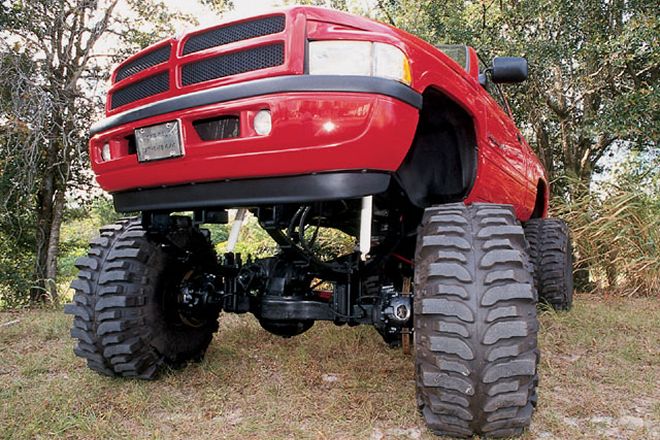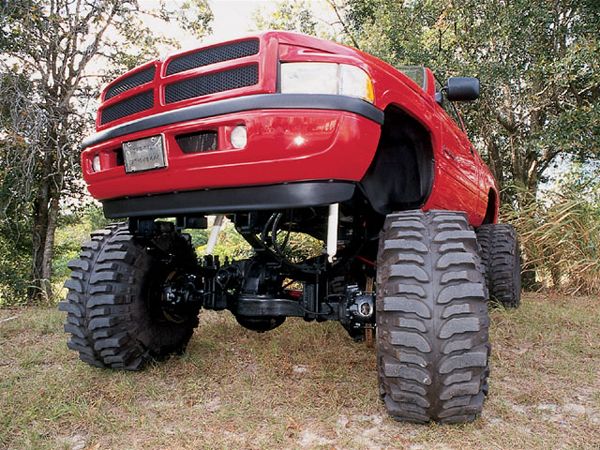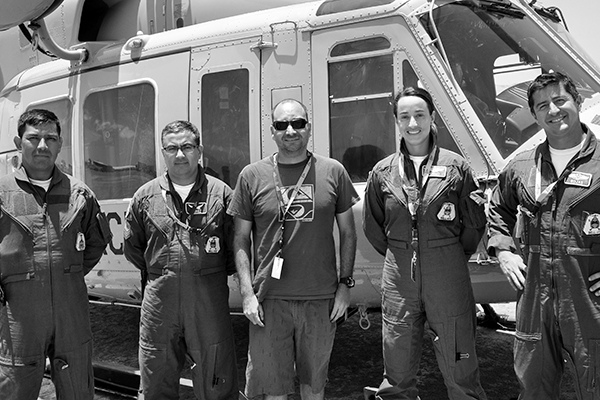
 Ken Brubaker
Senior Editor, Four Wheeler
Ken Brubaker
Senior Editor, Four Wheeler

Deep, suction-like mud has a way of annihilating axle components faster than you can say, "Wow, this mud is really deep!" So, mud-country 'wheelers are starting to turn to 2 1/2-ton military axles under their trucks in an effort to bulletproof their vehicles against the inconvenience and aggravation of snapped and pretzeled parts. Many potential buyers turn to Chuck's Trucks in Orlando, Florida, because Chuck Davis and his crew are some of the leading purveyors of 2 1/2-ton military axles.
 The axles that Chuck's Trucks uses are procured from military-surplus stock. Some, like this one, are brand spankin' new, while others have served a tour of duty under 2 1/2-ton 6x6 military trucks. Over the years, Timken and Rockwell have manufactured these axles, but all of the basic components are generally the same. Parts are plentiful, and interestingly, many parts (such as bearings and seals) are available over the counter from standard parts sources.
The axles that Chuck's Trucks uses are procured from military-surplus stock. Some, like this one, are brand spankin' new, while others have served a tour of duty under 2 1/2-ton 6x6 military trucks. Over the years, Timken and Rockwell have manufactured these axles, but all of the basic components are generally the same. Parts are plentiful, and interestingly, many parts (such as bearings and seals) are available over the counter from standard parts sources.
Chuck's Trucks has been modifying and installing military axles for 12 years, and the shop offers several packages for the potential buyer. These range from simple cash-'n'-carry to a full-on install with a custom suspension of your choice. Figure on a base price of about $4,000 for a pair, with disc brakes. Not only that, but Chuck's offers a couple of braking options for your new Rockwells, including your choice of driveline brakes (for off-road use) or disc brakes (for street use). Both of these systems use Chuck's Trucks' custom laser-cut bracketry for mounting the brakes to the axle housing. Chuck and his crew also can install a Detroit Locker in your new bestest-buddy-in-the-whole-wide-world, and this will ensure that you will not only have a tough driveline, but also one that is totally locked.
The upside to installing one of these units is that you get a significantly stout axle that can inherently take a heckuva pounding. One possible downside is that your vehicle has to run at least 44-inch diameter tires. This is because all 2 1/2-ton military axles are fitted with 6.72 gears, and as of this moment, there are no aftermarket gears available. But hey, you wanted to fit bigger wheels and tires anyway, didn't you?
Weighing Your Options
We know what you're wondering, because we were wondering the same thing: What about weight? Is there a huge difference between a Dana 44, Dana 60, and a 2 1/2-ton Rockwell? To find the answer to that question, we contacted Boyce Equipment in Ogden, Utah, and talked with military axle guru Mark Boyce. He says that a complete Dana 44 frontend (defined as one with steering components and disc brakes) weighs approximately 240 pounds, a complete Dana 60 frontend weighs approximately 505 pounds, and a complete 2 1/2-ton Rockwell front diff weighs approximately 640 pounds. Obviously, if your rig were equipped with Dana 44s the weight increase in installing Rockwells would be substantial. However, if your truck is currently sitting on Dana 60s, the difference in weight to upgrade to a pair of Rockwells would be less than 270 pounds. The rear 2 1/2-ton Rockwells are a bit lighter in weight than the fronts because of the lack of steering components, which is minor if your rig tips the scales at more than 2 tons.















